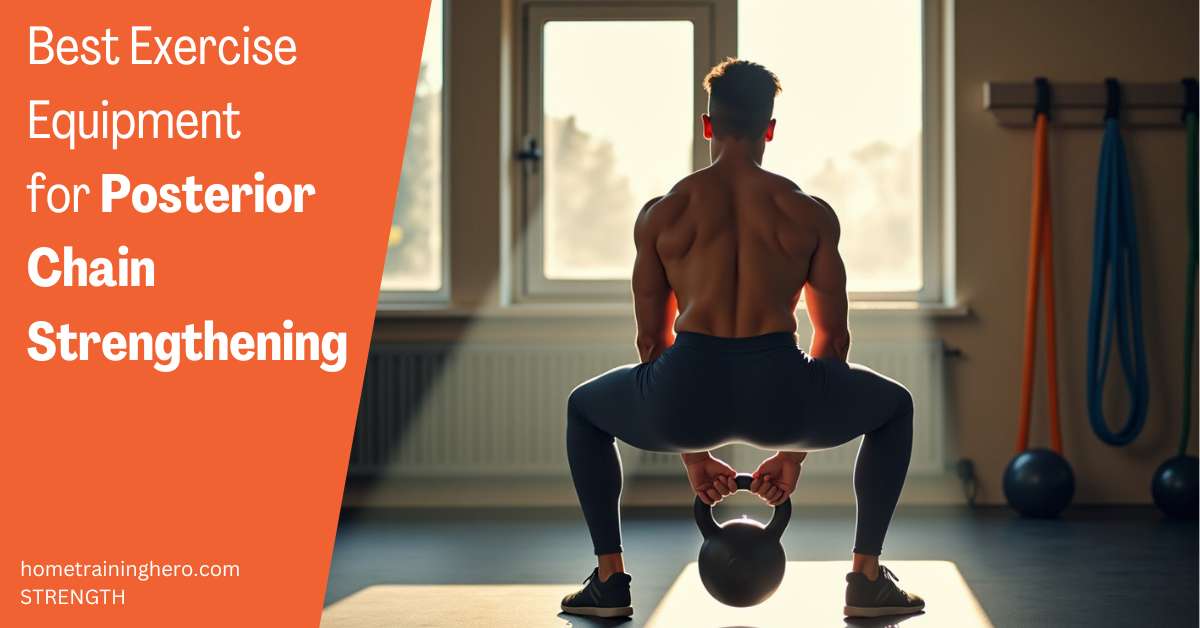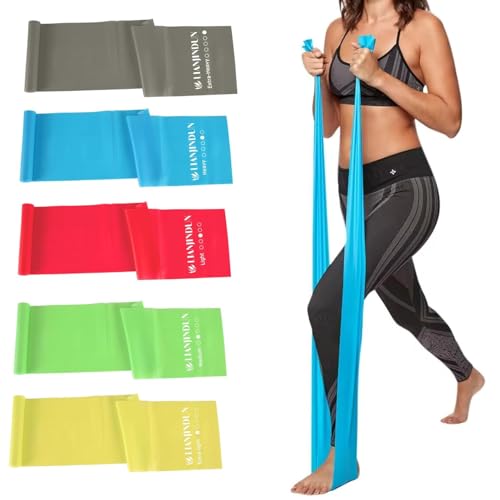Ever feel like your workout routine is missing something?
You might be neglecting one of the most crucial muscle groups in your body – the posterior chain. As a personal trainer with over a decade of experience, I’ve seen how strengthening these muscles can transform not just your fitness level, but your daily life.
Read on and discover my favorite best exercise equipment for posterior chain strengthening.
- Amazon Kindle Edition
- Schniederjan, Sean (Author)
- English (Publication Language)
Contents
What Is the Posterior Chain?
The posterior chain is the powerhouse system of muscles that runs along the back of your body, from your neck down to your heels. These muscles work together to keep you upright, help you move efficiently, and generate power for nearly every athletic movement. The main muscles include:
- Neck extensors
- Upper and lower back muscles
- Glutes
- Hamstrings
- Calves

Why Posterior Chain Strength Matters
Before we dive into equipment recommendations, let’s understand why posterior chain strength is crucial:
- Improved Posture: In our desk-bound world, strong posterior chain muscles help counteract the effects of prolonged sitting
- Injury Prevention: Strong posterior chain muscles reduce the risk of back pain and lower body injuries
- Enhanced Athletic Performance: Whether you’re running, jumping, or lifting, a strong posterior chain improves power output
- Better Daily Function: From picking up groceries to climbing stairs, these muscles support everyday movements
Top Equipment Choices for Posterior Chain Training
Let’s explore the most effective equipment options for strengthening your posterior chain at home, ranked by effectiveness and versatility:
| Equipment | Primary Benefits | Space Required | Price Range | Best For |
|---|---|---|---|---|
| Resistance Bands | Versatile, portable, great for all levels | Minimal | $15-50 | All-around training |
| Kettlebells | Excellent for dynamic movements | Small | $30-100 | Power development |
| Glute-Ham Developer | Targeted posterior chain work | Medium | $200-500 | Serious training |
| Suspension Trainer | Bodyweight mastery, adjustable difficulty | Minimal* | $100-200 | Full-body control |
| Deadlift Platform | Heavy lifting capability | Large | $300-1000 | Strength focus |
*Requires a sturdy mounting point
1. Resistance Bands
Best for: Beginners and intermediate users seeking versatility
Resistance bands are my top recommendation for home posterior chain training. They’re incredibly versatile, cost-effective, and perfect for all fitness levels. When choosing resistance bands, look for:
- A set with multiple resistance levels
- Durable latex or fabric construction
- Secure handles or anchor points
Learn more about the best resistance bands for building muscle
2. Kettlebells
Best for: Dynamic strength and power development
Kettlebells are exceptional tools for posterior chain development. Their unique design allows for exercises that combine strength and mobility work. Key features to consider:
- Cast iron construction for durability
- Wide, comfortable handle grip
- Multiple weight options for progression
Explore our comprehensive kettlebell guide
3. Suspension Trainers
Best for: Bodyweight mastery and functional strength
Suspension trainers like TRX systems offer unique benefits for posterior chain development:
- Adjustable resistance using body angle
- Minimal space requirements
- Great for both strength and mobility work
Discover more about suspension training benefits
4. Glute-Ham Developer (GHD)
Best for: Dedicated strength athletes
While more expensive and space-consuming, a GHD is unmatched for targeted posterior chain development:
- Isolated hamstring and glute work
- Adjustable for different exercises
- Professional-grade training capability
Check out our guide to the best glute machines for home
Creating Your Posterior Chain Training Plan
To make the most of your equipment, follow these principles:
- Progressive Overload: Gradually increase resistance or difficulty
- Exercise Variety: Include both dynamic and static movements
- Proper Form: Focus on quality over quantity
- Regular Assessment: Track your progress and adjust accordingly
Sample Weekly Training Schedule
- Monday: Heavy resistance band work
- Wednesday: Kettlebell power training
- Friday: Suspension trainer mobility and strength
- Saturday: Light activation and recovery work
Safety Considerations
When training the posterior chain, keep these safety tips in mind:
- Always warm up thoroughly
- Start with lighter weights and perfect form
- Listen to your body and avoid overtraining
- Maintain proper breathing throughout exercises
Learn more about preventing training injuries
Future-Proofing Your Training
As you progress, consider these advanced strategies:
- Combining Equipment: Mix different tools for varied stimuli
- Periodization: Structure your training in focused blocks
- Recovery Tools: Invest in foam rollers or massage tools
- Training Logs: Keep detailed records of your progress
FAQ
Q: How often should I train my posterior chain? A: Aim for 2-3 dedicated sessions per week, allowing for adequate recovery between workouts.
Q: Can I build a strong posterior chain without equipment? A: Yes, but equipment can accelerate progress and provide progressive overload options.
Q: What’s the minimum equipment needed for effective training? A: Start with a quality set of resistance bands and gradually add other tools as needed.
Conclusion
Strengthening your posterior chain doesn’t require a full gym – just the right equipment and knowledge. Whether you choose resistance bands, kettlebells, or more specialized equipment, consistent training with proper form will lead to impressive results. Start with the basics and progressively build your home gym as your needs evolve.
Ready to take your posterior chain training to the next level? Explore our complete guide to what makes the posterior chain so important and start building your stronger, more resilient body today.
Remember, the best equipment is the one you’ll use consistently. Choose tools that fit your space, budget, and fitness goals, and you’ll be well on your way to developing a powerful posterior chain that serves you in both athletic pursuits and daily life.
















